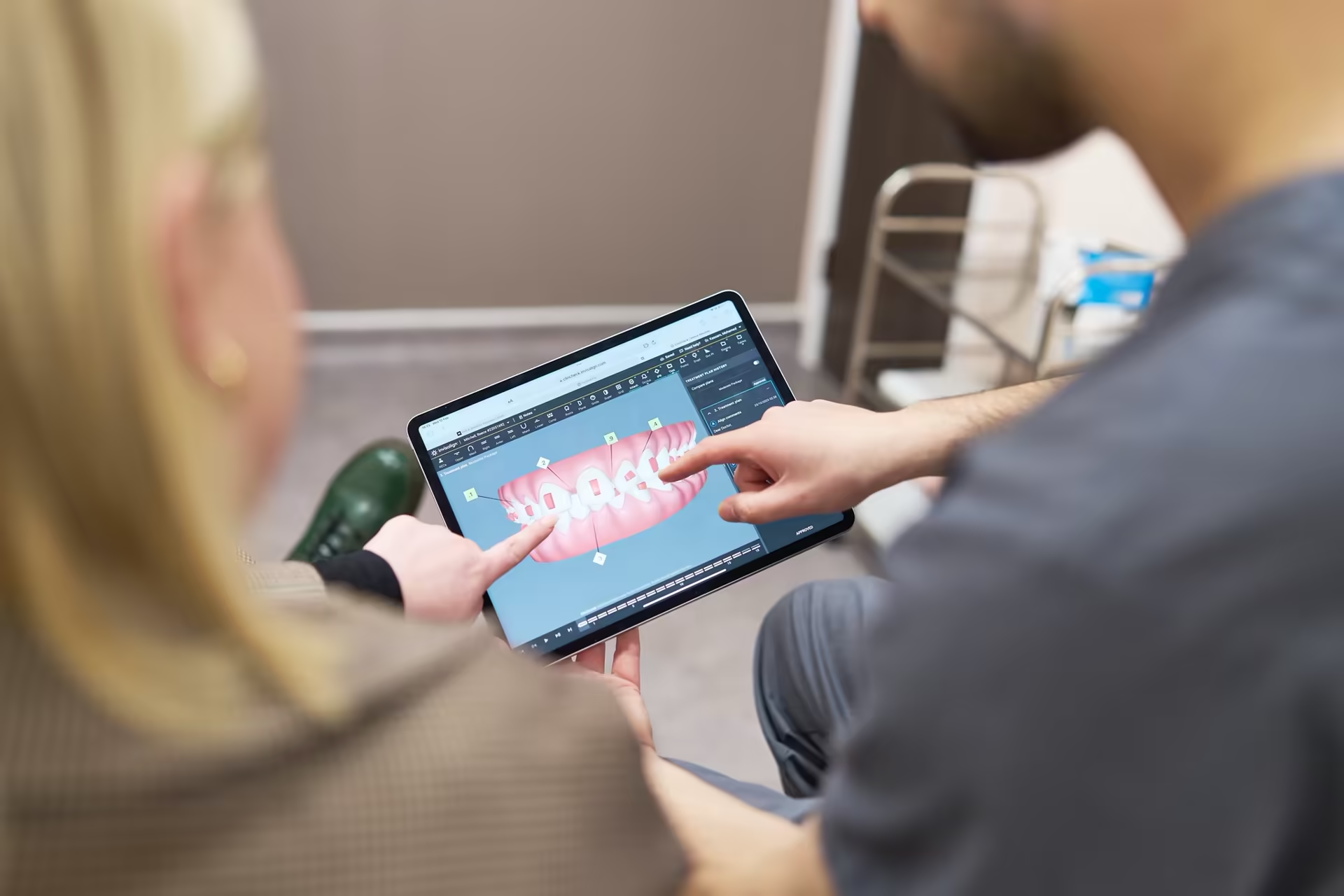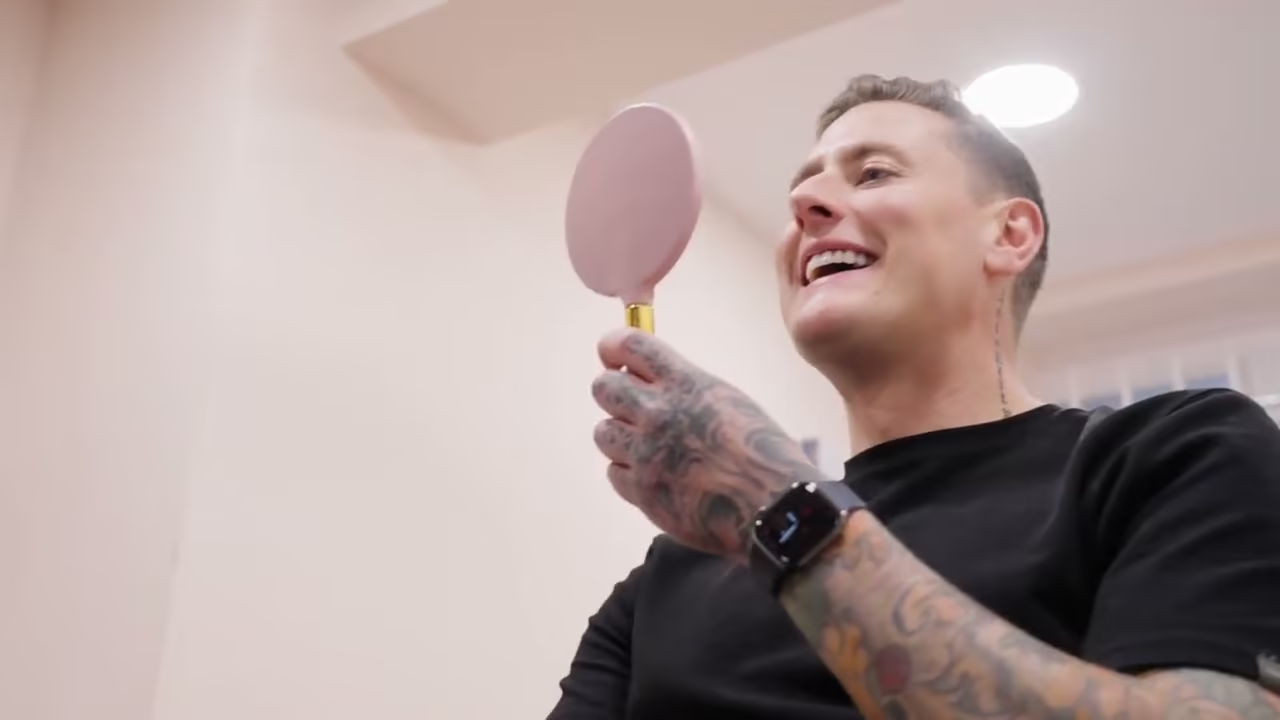
Straighten your teeth the invisible way with Invisalign
Straighten your teeth discreetly with Invisalign’s clear, removable aligners tailored for comfort and flexibility.
Achieve Your Dream Smile Effortlessly with Invisalign. Say goodbye to the days of conventional metal braces and welcome the revolutionary Invisalign® treatment, one of the most cost effective ways of achieving perfect, straight teeth quicker than ever before.
If the thought of "teeth straightening" immediately brings to mind images of awkward teenagers with metal braces, rest assured that the landscape has evolved significantly. Embrace the transformative power of Invisalign®, a modern solution that redefines the path to a flawless smile.
Limited time offer, worth upto £1,000 !!
FREE 30 Minute Consultation
FREE Digital Scan and Photos
FREE Smile Simulation
FREE Virtual Clincheck Proposal
FREE Essix Retainers
FREE Premium Teeth Whitening
FREE 0% APR Finance Payment Plan (subject to affordability, age and status, minimum spend applies)
Join the thousands of patients who recommend Zental
We are dedicated to providing exceptional dental care in a tranquil environment. Renowned for our outstanding service, we have helped thousands of patients transform their smiles. Experience the Zental difference and discover a new standard in dental care. Our patient reviews speak for themselves!
Before & After
Crowding
Crowding
Before
This case of upper and lower crowding was treated by one of our Specialist Orthodontists. The patient did not like how his teeth detracted from his smile. There was a fair bit of crowding with the teeth angled and mal-postioned creating a disharmony in the appearance of the smile.
After
Effective treatment with the Invisalign system allowed his teeth to be straightened in a most efficient way giving him back the confidence to smile once again without being conscious of how his teeth look. The crowding was corrected without the need for any extraction and in addition to a better smile the bite was improved so the teeth meet better. This allows better efficiency in the chewing process and less damage and wear in the long run.
Cross Bite
Cross Bite
Before
This patient did not like the fact that his upper incisor teeth were biting behind his lower teeth which is known as a 'crossbite' as he felt this was detracting from his natural smile. The bite was also out of sync which meant that the efficiency of the chewing process was compromised and would have led to a quicker deterioration and wear of some these teeth in the long run.
After
Treatment with Invisalign was able to correct this quickly and efficiently and has lead to a more stable bite and aesthetic smile. The benefit Invisalign brought to this case was that the patient was able to eat and chew normally without any hindrance or restriction as the Invisalign brace can be removed momentarily throughout the day for eating and brushing
Significant Crowding
Significant Crowding
Before
Before starting treatment we had a significant level of crowding with both the upper canines sticking out. A couple of the incisors are also tucked in behind the lower teeth which is known as a 'Cross bite'. These issues were detracting from the patients' smile and he wanted it to be corrected so he could smile with confidence once again.
After
The finished result after Invisalign treatment shows how the canines are now back into the right position with the crossbite and crowding all corrected. This has created a more harmonious smile and a very happy patient
Crowding
Crowding
Before
This patient was concerned mainly by the upper right incisor tooth which was not in line with the rest of the teeth.
After
A short treatment course with Invisalign was able to correct this crowding giving the patient the look she wanted. The main benefit of Invisalign for this patient was that it was discrete and comfortable so the patient was able to get on with her daily activities and work without any discomfort or worry regarding the visibility of the brace. Furthermore due to the ease of treatment with Invisalign, there are seldom any emergencies making this process so much more predictable, comfortable and efficient for the adult patient.
Testimonials
"
Lee was given a tough choice to make by his dentist at a young age. His experience altered his perception of visiting the dentist into adulthood and ultimately impacted his wellbeing. His journey with Zental led him to undergo general and orthodontic treatment. Lee shares his brave story and explains why he continues to Trust in Calm with Zental.
Lee's Story
"
Monica had an unpleasant experience with her dentist at a young age whilst undergoing Orthodontic treatment. Sadly, this altered her perception of visiting the dentist during adulthood. She decided to visit Zental Dental when she was in need of an emergency dentist. Monica shares her brave story and explains why she continues to Trust in Calm with Zental.
Monica's Story
"
Marlon lost confidence with his smile as he suffered from teeth crowding. He decided to visit Zental Dental and undergo Orthodontic treatment. Invisalign is a clear aligner system or invisible braces that can be removed anytime. Marlon shares his brave story and explains why he continues to Trust in Calm with Zental.
Marlon's Story
Meet the experts who will treat you

Dr Mira Morcos
General and Cosmetic Dentist
BDS, MJDF RCS(Eng)

Dr Mira Morcos
General and Cosmetic Dentist
BDS, MJDF RCS(Eng)

Dr Dhalisha Patel
General & Cosmetic Dentist
BChd (Leeds), BSc, BEng (Hons), MFDS RCPS (Glasg) Dentist

Dr Dhalisha Patel
General & Cosmetic Dentist
BChd (Leeds), BSc, BEng (Hons), MFDS RCPS (Glasg) Dentist

Dr Nitin Joshi
General, Cosmetic and Implant Dentist
BDS, MJDF RCS (Eng)

Dr Nitin Joshi
General, Cosmetic and Implant Dentist
BDS, MJDF RCS (Eng)
Articles
Book your next dental appointment with us

Our dental practices provide a serene, spa-like environment designed to relax your senses while delivering advanced, high-quality care. Using state-of-the-art technology coupled with exceptional patient care, we ensure a calm, stress-free experience that leaves you feeling refreshed and confident in your smile.

















.avif)
.avif)





